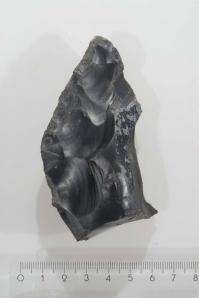Skilled hunters 300,000 years ago

Finds from early stone age site in north-central Germany show that human ingenuity is nothing new – and was probably shared by now-extinct species of humans.
Archeologists from the University of Tübingen have found eight extremely well-preserved spears – an astonishing 300,000 years old, making them the oldest known weapons anywhere. The spears and other artifacts as well as animal remains found at the site demonstrate that their users were highly skilled craftsmen and hunters, well adapted to their environment – with a capacity for abstract thought and complex planning comparable to our own. It is likely that they were members of the species homo heidelbergensis, although no human remains have yet been found at the site.
The project is headed by Prof. Nicholas Conard and the excavations are supervised by Dr. Jordi Serangeli, both from the University of Tübingen's Institute of Prehistory, which has been supporting the local authority's excavation in an open-cast brown coal mine in Schöningen since 2008. They are applying skills from several disciplines at this uniquely well-preserved site find out more about how humans lived in the environment of 300,000 years ago.
The bones of large mammals – elephants, rhinoceroses, horses and lions – as well as the remains of amphibians, reptiles, shells and even beetles have been preserved in the brown coal. Pines, firs, and black alder trees are preserved complete with pine cones, as have the leaves, pollen and seeds of surrounding flora.
Until the mining started 30 years ago, these finds were below the water table. The archeologists say they are now carrying out "underwater archaeology without the water." Work continues almost all year round, and every day there is something new to document and recover.
Some of the most important finds of the past three years have been remains of a water buffalo in the context of human habitation, an almost completely preserved aurochs (one of the oldest in central Europe), and several concentrations of stone artifacts, bones and wood. They allow the scientists to examine an entire landscape instead of just one site. That makes Schöningen an exciting location and global reference point not just for archaeology, but also for quaternary ecology and climate research. A research center and museum, the "Paläon," is to be opened in 2013 to to provide information to the public about the work going on in Schöningen.
Provided by University of Tübingen


















